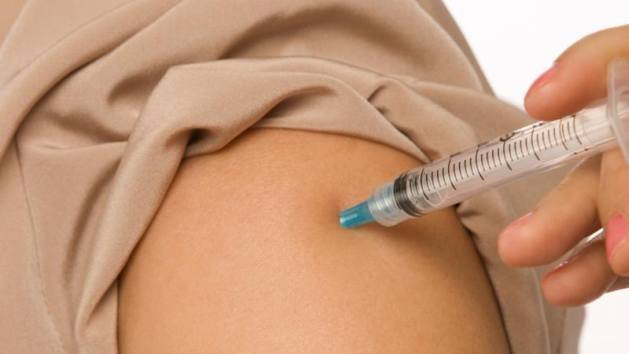
PRINCETON, New Jersey, USA, Mar 06 (IPS) – Within the west of Kenya, close to the shores of Lake Victoria, the place I come from, a tuberculosis outbreak is not any totally different from one which takes place wherever else on the earth. A number of dozen folks get sick, well being staff try to find and check everybody with a nasty cough and different signs. A concerted effort is made to make it possible for sufferers take their medicines for the whole period of remedy, no less than six months, to assist stem the creation of drug-resistant infections.
The issue is that Western Kenya has a excessive burden of HIV infections, which makes the communities extra susceptible to TB infections. Folks dwelling with HIV are greater than 14 instances extra prone to fall unwell with TB illness than folks with out HIV.
Different places — just like the communities on the Uganda shores of Lake Victoria, Copperbelt Province in Zambia, Japanese Cape Province in South Africa, or Enugu State in Nigeria — have this vulnerability.
Of the 30 international locations that the World Well being Group recognized as having a excessive burden of TB and HIV co-infections, 22 are positioned in sub-Saharan Africa. South Africa, India, Nigeria, Mozambique, and Kenya tragically have probably the most co-infections globally.
HIV just isn’t like TB. Whereas TB remedy takes six lengthy months, this can be a curable illness. HIV, however, can’t be cured. It may well, nonetheless, be saved in examine via drugs that suppresses the an infection.
The virus assaults the immune system, permitting different illnesses like TB, saved in examine by the immune system, to strengthen. The truth is, TB is the main explanation for dying for folks dwelling with HIV infections.
That is the place partnerships with international donors could make a distinction, with assets for applications which have positioned folks dwelling with HIV after which supplied them with correct medicines.
These applications assist preserve infections in examine, stopping HIV from spreading and stopping different infections like TB from turning into extra widespread. Related applications assist find folks with TB and supply them with medicines all through the six months of remedy.
The pattern proper now’s to disrupt these partnerships and reduce international assist, unraveling the protection web that addresses HIV and TB. This locations areas like Western Kenya at excessive threat from two contagious illnesses that don’t respect nationwide borders. If they aren’t contained in even one location, we run the chance of the contagion spreading.
There are such a lot of ways in which this case may be improved, in sub-Saharan Africa and all through the International South. We want new medicines for TB, to shorten the remedy time and make it simpler for sufferers to take the medication. We want medicines that may remedy HIV as an alternative of simply protecting the infections in examine.
We additionally want vaccines to forestall each of those infections. The one obtainable TB vaccine, BCG, dates again to 1921. It protects infants and younger kids in opposition to extreme types of TB, nevertheless it gives insufficient safety for adolescents and adults in opposition to the most typical type of the illness. There isn’t any vaccine to forestall HIV, though new prevention strategies have been recognized and are in want of improvement and distribution.
That is my work as a scientist, serving to to develop options for infectious illnesses which might be barely held in examine, if in any respect — even because the methods that tackle these illnesses have simply misplaced important funding.
There isn’t any disagreement that international assist makes a distinction; extra assets are wanted, not much less. An estimated US$22 billion is required yearly for TB diagnostic, remedy and prevention companies by 2027. But solely US$5.7 billion was obtainable in 2023. Extra assets are wanted, from governments in each the International South and International North.
International funding for uncared for illness fundamental analysis and product improvement has declined by greater than 20% because it peaked in 2018. As of 2023, high-income international locations supplied 59% of all funding; these numbers at the moment are anticipated to drop additional this yr.
It could be nice to see low- and middle-income international locations producing extra analysis that tackles illnesses like TB and HIV, and we’re on the trail to doing so, however we’re nonetheless sadly at the start levels of this journey.
Right this moment, progress in opposition to these illnesses stands on the fringe of a precipice as governments face inconceivable selections on the place to channel diminishing assets. The funding for all of this work doesn’t activate like a swap if international assist from high-income international locations is immediately discontinued.
We have now already misplaced a lot floor in the course of the COVID-19 pandemic. An estimated 700,00 TB deaths stemmed from the disruptions brought on by the pandemic. Lower than half of all folks contaminated with drug-resistant TB obtained remedy in 2023. And now we threat dropping the bottom that we’ve made up since COVID.
It will be significant that the International South and International North proceed to work collectively, discovering options to those illnesses that preserve too many components of society susceptible. The world will all the time be linked. Options to those illnesses profit us all.
Dr. Monicah Otieno, PhD, Head of Nonclinical Growth, Gates Medical Analysis Institute
© Inter Press Service (2025) — All Rights Reserved. Authentic supply: Inter Press Service



